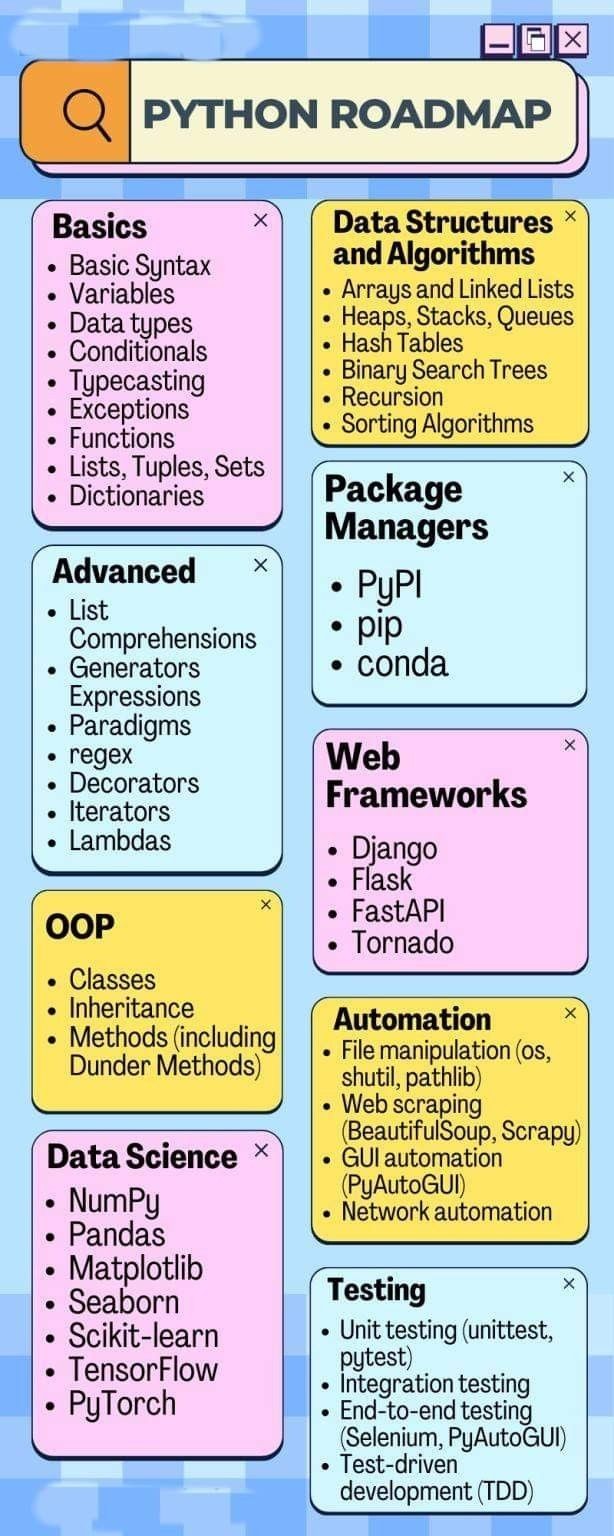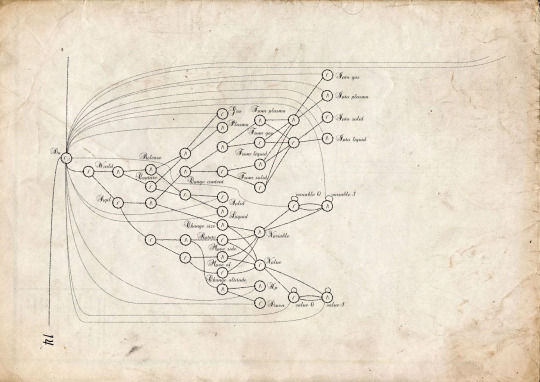#programming languages
Explore tagged Tumblr posts
Text
Programming languages for furries:
* cobra
* cowsel
* dog
* foxpro
* fish
* gamemonkey script
* grasshopper
* lynx
* mouse
* neko
* pike
* python
* ratfor/ratfiv
* serpent
* swift
* squirrel
* unicorn
* wyvern
* zebra
Honorable mention:
* squeak
* Apache Pig Latin
* moo
* wolfram
Dishonorable mentions:
* viper (it's for some cryptocurrency bullshit)
Mentions:
* NewtonScript (technically contains the word "Newt")
* OCaml (it almost is named O-Camel but it's spelled wrong)
* AWK (it's pronounced the same as the Auk)
Required pedantry: python, my favorite language, is actually named after Monty Python, not the snake.
283 notes
·
View notes
Note
the mercs as programming languages
Admin is afraid this is out of our wheelhouse, sorry
76 notes
·
View notes
Text
youtube
Presumptions in Programming
This post reflects on what Dr. Kanojia said in his video about assumptions and communications. I am importing outside concepts into to computer science. As I understand it, efficient communication depends a lot on presumptions. When you communicate with someone you presume that person understands. The magic happens when those presumptions are valid.

His model of communication looks like the figure [exhibit 1A]. You have the speaker on the left. The listener on the right. The blue lane represents the full information we want to convey. The green lane represents the actual information transmitted. The orange lane represents the information presumed.
I would say that efficient communication depends a lot on the green lines to be as small as possible. This means that the orange lines will be larger. What this translates to is that the listener needs to be highly educated or trained.
The figure [exhibit 1B]. On the left is the programmer. On the right is the assembler. Assembly language is a 1 to 1 correlation of instruction to code. Therefore I made the green line is solid. There are no presumptions we can rely on, hence there is no orange line. Speaker does all the work.
The figure [exhibit 1C]. On the right is the compiler of a higher level language. Languages like Pascal, C, BASIC, JAVA, etc. Less information is transmitted in the green lane. There are presumptions made hence the orange lane contains information. Compiler does some of the work.
The figure [exhibit 1D]. Its the ideal situation. One instruction means a whole lot of work gets done. Like when the emperor issued order 66. That was the end of the Jedi. In computer programming this happens in function calls. One API call means a whole lot of work gets done.
In conclusion the job of a language is to be able to convey as much information as possible with the least amount of effort. This is called the “code expression” capacity of a language. Some people use the term “compressibility” of information in a language. UncleBob explains code expression using the LISP language. LISP is mostly parenthesis and commas. And you can do a lot with just parenthesis and commas. Hence its said LISP has a high amount of code expression. It can be argued thou that LISP programs can become long and cryptic. UncleBob likes the least amount of syntax. But sometimes the more syntax a language has, the more “compressibility” of information its capable of.
19 notes
·
View notes
Text
Look I don't hate C you can write good code in C if you try and I understand the reasons for its popularity but so many people who don't know shit about C give insane made up reasons for why C is good. C is like if after world war 2 everyone decided to pattern every single gun on the sten because it was really easy to make. And now people retroactively were like actually the sten is the original gun and it's good because it interacts very closely with the bullet and has fewer moving parts. This is nothing, the sten is like that because it's cheap as fuck and when it breaks you can fix it in a burned out French cottage with some sheet metal and a rock and a cigarette.
#computer stuff#saw someone talking about C performance again#it's not! it's not performant!#that's the incredibly fucking complex compiler you built it with you rube#programming languages
98 notes
·
View notes
Text
I HAVE FINALLY SUCCEEDED


IT WORKS!!! IT WORKS!!!!!
[4, 5, 4.3] -> add BECOMES 13.3!!!!!!!!!!
YOU PEOPLE I HAVE DONE IT
source code will be coming soon (as soon as i get more helper functions working.
For now, PLEASE contribute if you can. Even as little as suggesting some helper functions could help me a ton.
Contribute below:
Open a PR, An issue, Anything, Just mention what the language lacks and you don't even need to implement it yourself, I'll add it to the To-Do list and get working on it ASAP.
Join the discord server, I will be posting updates and asking for suggestions and providing beta builds: https://discord.gg/JxnKn9jd
#code#codeblr#programming#compblr#programmer#progblr#developer#software engineering#c#programming languages#github#coding#coder#software engineer#technology#development#software development#software
108 notes
·
View notes
Text

Post #91: Pinterest, @usamaawan5752, Python Road Map, 2023.
#i love coding#programming#coding#coding is fun#education#i love python#learning#i love programming#coding for kids#programming language#i love tumblr#python coding#computing#programming languages#programmierung#programmer
141 notes
·
View notes
Text
Modern c++ is actually peak
The problem is that you have to be as precise as a needle or you're gonna have a 50-line function that uses things that you do not actually need and has WAY too many "std::"es and is incomprehensible
23 notes
·
View notes
Text
A friend and me had a conversation, which led to us wanting to confirm what we were thinking. Our "hypothesis" (very informal one xd) is that there's a correlation between people who study languages, and those who are learning programming. As such, here's the poll:
Please, reblog for a larger sample size!
#computer science#linguistics#Language#language study#language learning#programming languages#Programming#coding#language tumblr#computer engineering#Technology#polls#tumblr polls
16 notes
·
View notes
Text
Programmieren in Basic: Computergeschichte

Post #309: Heimcomputermuseum.de, Programmieren in Basic, Ein Streifzug durch die Computergeschichte, 2024.
#programming#basic#retro programming#vintage programming#basic programming#education#gwbasic#ilovebasic#iloveprogramming#ilovegwbasic#learning#teaching#computer#computer history#computer programming#programming languages#basic programmierung
36 notes
·
View notes
Text
linguist parents of a programmer who don't approve of their child's decision to not persue the family craft:
"so anyways, when are you gonna learn a REEAL language?"
"There are always open spots in German"
#comedy#funny#haha#joke#joyful cheer#joyus whimsy#coding#meme#linguistics#programming#codetober#codeblr#programmer#programming languages
119 notes
·
View notes
Text

Finite State Automata defining spell syntax.
The spells use only three different characters to be written, "╭" (which can represent "0"), "ʌ" (which can represent "1") and a validation symbol "ᴎ" that can represent ";". When writing spells, spaces, indentation and parenthesis can be added to make them more readable. Those do not modify the spell meaning as only the three characters precedently mentionned matter.
A fourth glyph "╰" can be placed to signify the begining of a spell too, so indentations are more logical, but this character do not add meaning to the spell either.
This automaton is nearly deterministic, with the exception of the validating "root" state, that can only go back on itself to exit the current loop (an ongoing while, the spell itself or a function definition for exemple). The spell also cannot validate before exiting every ongoing loop, and can only validate once every loop are exited. Otherwise, the rest of the states and their transitions are entirely deterministic.
A more detailed version of the FSA :



#art#artists on tumblr#my art#trans artist#queer artist#fantasy#programming#coding#code#indie games#gamedev#indie dev#programming languages#esoteric language#esoteric programming#spellcasting#spellbook#spells#spell#spellcaster#grimoire#spellwork#witchcraft#witch#spellcraft#nerd shit
7 notes
·
View notes
Text
okay I could have sworn I saw something at one point about a weird programing language that was like oddly kinky? It would praise you when you completed lines of code I think and it had an odd gentle mommy Dom vibe.
i can't remember the name of it or find it now so if anyone thinks this is familiar or know the name of it let me know please.
I thought it might be Whitespace because I remembered it somehow being connected to the videogame Rust but that doesn't seem to be it.
#rambles#searching#looking for something#programming#coding#coding languages#scripting#programming languages#scripting languages#help
6 notes
·
View notes
Text
Hi! I've been working on a new dependently typed programming language that's designed to be a Pareto improvement over everything that already exists and it's getting to the point where it's actually usable for practical purposes. I'm really excited about it and want to talk about it so please ask me questions about it!
I've designed a dependently typed language with subtyping and a useful fragment providing universal inference to improve practicality for general purpose scripting and programming. I've been using some original mathematical research to push closer to the impossibility proof boundary than any language has ever gone before, and getting some significant convenience and expressiveness out of it. I'm building a categorical notion of semantics to permit really easy compilation to any target, and hopefully extremely high performance with no UB.
I've developed a new approach to compile time reflection that exposes more of the language to metaprogramming effectively and usefully and safely than prior art, enabling extremely powerful abstractions that don't require syntax macro fuckery. Though just for good measure I developed a new way to approach syntax macros that's nicer too.
I'm integrating a modular effects and coeffects system that should allow better safety and convenience than the rust borrow checker while being a lot more flexible about what it represents and checks, for example one thing I'm excited about are security types, where you can, for example, specify that a piece of data is derived from a user's private data, and that contaminates everything causally linked from that data (except for specific security primitives like a one way hash or a homomorphic computation or whatever) (to the extent that the semantics can represent; making formal proofs of side channels is going to be a very long term project since there are no formal specifications of ISA semantics that capture them and all the hardware instructions to mitigate them are actually broken and don't work as advertised), so then a web response marked with another user's domain statically can't accept private information that doesn't belong to them.
10 notes
·
View notes
Text

🎊🎊🥳🥳
End term practical marks has been declared......
It's so satisfying seeing my hard work paying off.
I didn't believe I will do so better in programming even tho it's my first time ever to learn programming.
I just want to dance today!!!!.
#academics#study motivation#studyblr#study blog#programming#programming languages#college#college life#light academia#end term marks#semester end#last blessings of 2024#so happy rn#please guide me god#i love studying#life achievements#seekerofrealitys-blog#desi tumblr#desiblr#indian education#computer#computer science#pinterest#pinterest quotes
6 notes
·
View notes
Text
Writing a programming language in C. How is this syntax:

Join the discord server, I will be posting updates and asking for suggestions and providing beta builds: https://discord.gg/JxnKn9jd
#compblr#codeblr#progblr#programming#programmer#software engineering#code#developer#c#c language#programming languages
55 notes
·
View notes